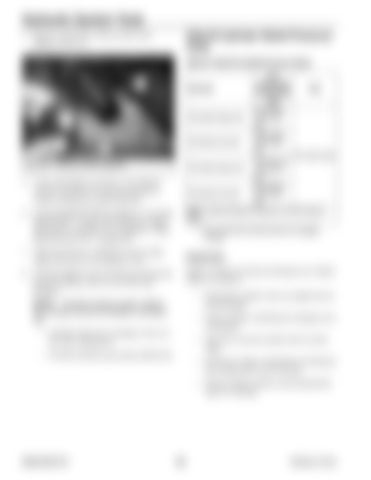Hydraulic System Tests 4. Remove cap (B, Fig. 528) on relief valve adjuster screw (C).
Tilt/Lift Cylinder Relief Pressure Tests Table 20: Tilt/Lift Port Relief Pressure Values
C
Parameter
Lift Cylinder (base end)
Lift Cylinder (rod end)
B
Port relief values 237-245 bar Tilt Cylinder (base end) (3448-3552 psi) 237-245 bar Tilt Cylinder (rod end) (3448-3552 psi) NOTE: Install tee fittings as required to connect pressure gages.
5. Using a flat-blade screwdriver, turn adjuster screw (C) clockwise to increase pressure or counter-clockwise to reduce pressure. 6. Lower the ROPS/FOPS according to “Lowering ROPS/FOPS” on page 240. Restart the engine and perform a pressure test according to “Main Relief Pressure Test” on page 288.
8. If turning adjuster screw (C) does not change the pressure reading, check for the following problems:
Note
1
Fig. 528 – Pressure Relief Adjuster
7. After the pressure is within the correct range, replace the cap over the adjuster screw.
Value (measured at low idle [1000 rpm]) 237-245 bar (3448-3552 psi) 138-142 bar (2000-2060 psi)
1. Early machines tilt cylinder base end is plugged; no relief.
Inspection Inspect cylinders for physical damage/wear. Repair/ replace as required: • Check that cylinder rods are straight and not bent/damaged.
NOTE: Possible hydraulic system malfunctions include, but are not limited to, the following:
• Check cylinder rod plating for damage/corrosion/pitting.
• Possible relief valve cartridge on the control valve malfunction
• Check the external cylinder tube for dents/ dings.
• Possible hydraulic gear pump malfunction
• Check for evidence of hydraulic oil leaking at the cylinder ports or the rod seals. • Check cylinder rod/base end bearings/bushings for wear/play.
50940165/C0718
290
Printed in U.S.A.






































































